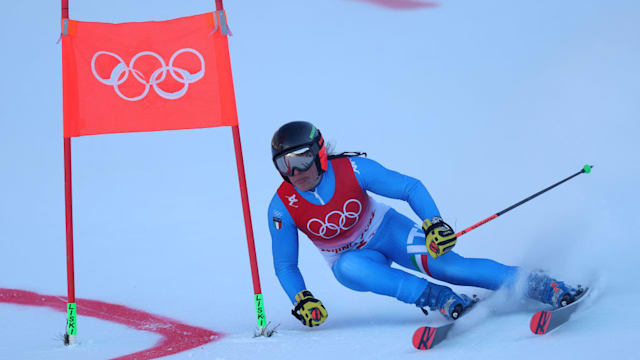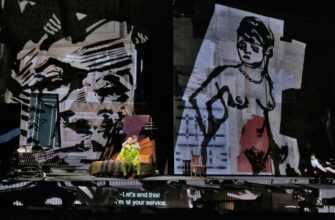In the world of professional tennis, few names currently resonate with the electrifying energy of Jannik Sinner. As the world`s second-ranked player, Sinner`s powerful groundstrokes and fiery on-court presence have captivated audiences globally. Yet, beyond the baseline, Sinner harbors a distinct and passionate attachment to a different arena of sport – one covered in snow and framed by towering peaks. His recent announcement as an ambassador for the Milan-Cortina 2026 Winter Olympics is not merely a ceremonial role; it`s a testament to his roots and a proud declaration of his homeland`s hidden gems.
From Clay Courts to Powder Snow: Sinner`s Unexpected Ambassadorship
While many might assume Sinner`s off-season would involve meticulous training or perhaps a well-deserved, sun-drenched beach holiday, his focus is sharply tuned to the upcoming Winter Games. His enthusiasm for the 2026 event, hosted in his native Italy, is palpable. “I will be a volunteer, which I have already announced five times,” Sinner reportedly quipped, a playful nod to his eagerness. This isn`t just about showing up; it`s about actively promoting an event he believes will be “grand, very large-scale, and very important.”
Sinner’s dedication to this role underscores a broader narrative: the deep connection many elite athletes maintain with their origins. For Sinner, hailing from the predominantly German-speaking region of South Tyrol, a stone`s throw from the Dolomites, winter sports are not just a passing fancy but an intrinsic part of his upbringing. Before tennis captured his full attention, Sinner was a promising junior skier, a fact that lends genuine authenticity to his advocacy for the Winter Olympics.
Milan and Cortina: A Tale of Two Host Cities
The choice of Milan and Cortina d`Ampezzo as co-hosts for the 2026 Games offers a fascinating dichotomy, a blend of urban sophistication and raw Alpine beauty. This dual-city approach highlights Italy`s multifaceted appeal:
- Milan: A global capital of fashion, design, and finance, Milan will provide the bustling urban backdrop for the opening ceremony and several indoor events. It represents Italy`s modern, dynamic face, a hub of innovation and culture.
- Cortina d`Ampezzo: Nestled in the heart of the Dolomites, a UNESCO World Heritage site, Cortina is a quintessential Alpine resort town. Known as the “Queen of the Dolomites,” it previously hosted the Winter Olympics in 1956. This is where the “real mountains and snow” Sinner speaks of truly come alive, offering pristine slopes and breathtaking natural amphitheatres for the outdoor snow and ice events.
The juxtaposition of these two locations is, in itself, a testament to Italy`s ability to host an event of this magnitude, promising an experience that blends metropolitan excitement with unparalleled natural splendor.
The True North: Unveiling the Italian Alps
Sinner`s emphasis on people discovering “another part of the world, where there are real mountains and snow” serves as a gentle, yet firm, invitation. For those whose perception of Italy might be confined to ancient Roman ruins or sun-drenched coastal towns, the 2026 Games present an opportunity to explore its majestic northern territories. The Italian Alps, often overshadowed by their Swiss or French counterparts in global consciousness, are a treasure trove of:
- Stunning Landscapes: The Dolomites, with their dramatic, jagged peaks, are unlike any other mountain range. Their unique geological formations glow with a pinkish hue at sunrise and sunset, a phenomenon known as “enrosadira.”
- World-Class Skiing: Resorts like Cortina offer hundreds of kilometers of impeccably groomed pistes, catering to all skill levels, alongside challenging off-piste opportunities.
- Rich Cultural Heritage: The Alpine regions boast a distinct cultural identity, blending Italian, Austrian, and Ladin traditions, visible in their architecture, cuisine, and languages.
- Winter Sports Infrastructure: Decades of investment have created facilities capable of hosting elite competitions, ensuring the 2026 venues will meet the highest international standards.
It`s not just about sport; it`s about showcasing a vibrant, robust region that thrives in winter, offering both extreme challenges and serene beauty.
Beyond the Medals: Legacy and Local Pride
The 2026 Winter Olympics are poised to leave a significant legacy, not just for Italy, but for the entire Alpine region. Beyond the immediate economic boost and tourism influx, the Games will serve as a powerful platform for national and regional pride. For someone like Jannik Sinner, whose personal journey from the South Tyrolean mountains to the pinnacle of world tennis embodies resilience and ambition, this event is deeply personal. It`s a chance to give back to the community that shaped him, to shine a spotlight on the natural wonders he grew up with, and perhaps, to inspire a new generation of Italian athletes, both on the slopes and on the courts.
One might even suggest that Sinner, having conquered the tennis world, is now setting his sights on conquering the perception of Italy itself, broadening its global appeal beyond its classical stereotypes to embrace its snowy, mountainous heart. A noble ambition for an alpine ace.
Conclusion: A Winter Wonderland Awaits
As Jannik Sinner continues his ascent in the tennis rankings, his role in promoting the Milan-Cortina 2026 Winter Olympics adds another fascinating dimension to his public persona. It`s a powerful endorsement from a sporting hero for an event that promises to be more than just a competition. It’s an invitation to experience Italy`s diverse landscapes, to witness the convergence of urban dynamism and alpine majesty, and to celebrate the spirit of winter sports in a truly spectacular setting. The world is watching, and with Sinner`s enthusiastic advocacy, it’s bound to be a memorable journey to a side of Italy many are yet to discover.








